People of the Jammu and Kashmir (J&K) region practiced Hinduism, Buddhism and Zoroastrianism at the time when Islam entered the Kashmir Valley. One aspect that remained constant in Kashmir was that in spite of the arrival of foreign Sufi Saints such as Mir Sayed Ali Hamadani, Mir Mohammad, Sayed Jaamaluddin Bukhari and Sayed Ismail Shami from Westand Central Asia, they did not disrespect the enshrined values of Kashmiri culture and local religious faith of the people; rather they incorporated values of mystique culture of Kashmir and helped in development of indigenous Sufi order, unique to Kashmir.1
Kashmir provides some of the clearest instances of shared religious and social identities, examples of which are to be found anywhere in the world2. In spite of the multi-cultural, multi-lingual and multi-religious society, clash of faith, culture and ethnicity did not take place in Kashmir till the recent past. Then, what has changed in the last three decades that the Kashmiri society has been fractured on religious and cultural ground? Is the root cause of conflict in Kashmir hidden in historical, geographical and geopolitical faultiness; or is it a desire for political, social and economic assertiveness of the Kashmiri society over the entire state? If that be so, why there is no anger among the people of Jammu and Ladakh Divisions, as more than any other part of the State, they are in reality the victims of political discrimination?
The conflict in J&K has internal and external dimensions that are driving the agenda of separatists and Pakistan. Both these dimensions are complementary to each other. When intra-state affairs appeared to be settling or on a path to reconciliation, the external dimensions take the centre stage, be it across the Line of Control (LOC) violence, infiltration, or provocation on religious or social sphere. One aspect that has remained constant is Pakistan’s culpability to destabilise the situation by cultural and physical violence. Geo-strategic significance of J&K is also one of the reasons of instability because the State is a geographic pivot that connects India with Pakistan, Afghanistan, Tibet Autonomous Region. and even the Xinxiang province of China. Keeping J&K boiling is to prevent turbulence in ‘Pakistan Occupied Kashmir’ (PoK), since it will affect both Pakistan and China more than ever. China-Pakistan Economic Corridor (CEPC), the flagship project of China that will give strategic communication linkages to the Xinjiang-Uighur Autonomous Region (TAR) with Arabian Sea could also get affected if there is reversal of threat or uprising in PoK including the Northern Areas. The conflict that is being projected as a case of indigenous movement for self-determination in reality is a case of geo-strategic clash of interests, and people of J&K have failed to see it as a conspiracy against them by Pakistan and China. The political leadership of J&K is also responsible for providing fault-lines from time to time that are exploited by Pakistan to give fillip to the instability.
Some other reasons of conflict in Kashmir are political disengagement and lack of institutional responsiveness. There is a difference between political alienation and political disaffection. Political alienation is lack of faith in the ruling government and can be set right by voting out a defunct political ideology that loses the trust of the people. But political disaffection is when people lose faith and trust in the democratic institutions of the State, and people no more show interest in political process since they see it as a tool of oppression. Kashmir was suffering till 1990 from political alienation; but the alienation turned into disaffection because none of the political alternatives showed any inclination to restore faith and trust among the people in democratic institutions; one after another the state institutions collapsed.
Where are We Heading?
Conflict in Kashmir is caught in a social, psychological, economic and theological web. We need to ask some hard questions like as to where are we heading in this conflict? Protracted conflicts often create unbridgeable gap and close the avenues of reconciliation, compromises and concessions. Are we winning in Kashmir? If no, what are the reasons? Answers to these questions is that it is not a conflict that can be fought with weapons and security forces, but a conflict of mind and perceptions. It must be understood that ideology is important to a conflict. Shared beliefs create a sense of group identity, specific targets of hostility and enable coordinated actions. Understanding ideology is key to effective conflict resolution and management.3
Pakistan has created shared belief among the people of Valley that they are the victims of the Indian State. What we need to understand is that it’s a social-political war and people are the centre of gravity. No one may be defeated in this war, but none will be victorious if it continues to simmer. Aim of the establishment should be to defeat the ideology and strategy of the separatists and the Inter-Services Intelligence (ISI). At this stage, we are not winning, rather we are losing loyal constituency of right thinking population in Kashmir because we are unable to mobilise intellectual elites against the hydra of social and psychological paradox. On the other side, Pakistan has been able to project and portray it as artificial scarcity of religious and political freedom in J&K. It has instilled collective religious and societal fear among the population from a Hindu majority nation. Proxies of Pakistan have created the perception of war between the government and the people. As a consequence, the conflict has spread from physical domain to cognitive domain and the impressionable mind of youths has become polluted. The tools that can deal with this kind of warfare are visible governance, grievance redressal system, societal reconstruction through education and participation of intellectual elites to moderate the anger among the youth. For some reason, this battle space has been left uncontested by the state.
Who is fighting this war and who is the enemy of the state? If people are not the enemy then who is the enemy? The crux of the conflict management and conflict resolution lies here. No nation can win a war of perception by defeating its own people. In the ultimate analysis, people should be victorious and ideology of fracture should be defeated. While India is fighting and eliminating terrorists, Pakistan is eliminating the idea of India in Kashmir. The outcome of this operational gap in response is that India may have retained the geographical expanse, but it is fast losing demographic expanse in Kashmir. It also highlights the inadequacy in understanding conflict in Kashmir and docketing it as a case of Pak sponsored terrorism. Terrorism is only a medium to allow creation of space for war of perception.
Why people of Kashmir are behaving irrationally? The Kashmiri society has been under stress for the last 300 years. They felt betrayed, by the Mughals when Yousuf Shah Chak was imprisoned in Agra, and subsequently by the Dogra rulers. Sheikh Abdulla sold the dreams of a life beyond comparison, especially after Government of India accepted the Article 370 and a sense of entitlement and ‘why not me first’ crept in the minds of every Kashmiri. When the aspirations did not meet the actions of newly formed state, it led to a sense of betrayal and sowed the seeds of disaffection, and Pakistan exploited it to the hilt. From being a privileged society, Kashmiris were made to believe by the polity of Kashmir and Pakistan as victims of the politics of majority. If society is under stress and under perceived threat of losing exclusive identity, it loses the sense of belonging to the state.
Pakistan was aware that Sufism, shrine, Kashmiriyat and the intellectual elite of Kashmir were the biggest impediments in the path of their objectives. The biggest harm that Pakistan did to Kashmir was that it destroyed the intellectual elites that often gave course correction to Kashmiri society. There was physical threat, coercion, and a narrative build that shaped an opinion that India had created a self-serving intellectual elite who are acting as enemies of Islam in Kashmir. With no elite able to steer the society out of this mess, Kashmir went into the hands of the Wahhabi and Jamaat ideologues that disdained liberal Sufi Islam, democracy and enshrined values of
Success of the government in anti-terrorist operations is not in elimination of terrorists and their modules, but to dry out the pipeline of willing youth to take up arms. The task to prevent or dry the supply line of potential terrorists and the support system is in fact the responsibility of the state institutions, including political leadership, administration, society and robust law and order system. Even if a single youth joins the terror rank, it is in fact failure of the system which lost faith of the people. Thus most important task at this stage is to dissuade youth to join terror ranks.
Political disaffection among the masses comes when the feeling of powerlessness, cynicism and lack of confidence in the political process4 gets embedded in the public psychology. It takes root when politicians and democratic institutions refuse to interact or be answerable to the citizens of the state. In nutshell, such a situation in Kashmir has come primarily due to the political disengagement. Disaffection will continue to rise unless political engagement commences and people become centre of gravity for conflict resolution. There is a danger that anger could become ideology, and political bankruptcy could become a rallying point for complete civil disobedience.
Way Ahead
It took Pakistan three decades to destroy whatever belonged to the people and society in terms of cultural and historical heritage in J&K. It will be a miscalculation to expect that situation can be reversed in a couple of years by handing over the problem to the security forces. First issue is to work out in reverse order to assess what has been lost in Kashmir and to work on a recovery plan. Second, if loss is in social, cultural and psychological domain, application of military power as a lead agency would be an incorrect strategy.
Pakistan’s Inter-Services Public Relations (ISPR) has managed to carry out human terrain mapping in the Kashmir valley. To create instability they have been applying coercion, gratification, religious affiliation, and deterrence to manipulate perception of the people. The big question is that if Indian political parties can make use of social engineering and Artificial Intelligence to influence vote bank, why is it that Government has failed to carry out human terrain mapping of people of J&K till now? There is an urgent need to carryout ideological, political and communal mapping of citizens of conflict areas in J&K. In the absence of such a data, it is not possible for security forces, perception management experts and interlocutors to carry out meaningful ground work to deal with the separatists and proxies. No tangible results will be forthcoming if such modern tools are not used to counter the Pakistani propaganda machinery. It will be disastrous if we continue to work with outdated methodology of word of mouth and experience without even knowing what is happening in the dark web and how perceptions of people are being manipulated? The dated approach is unlikely to find a way ahead because the scenarios are changing at a rapid pace. Those who were at the helm of affairs yesterday have no political or public space left today. If Russia could win in East Ukraine without going to a war, why can’t India win war of perception in J&K? If Estonia could fight back state-on-state cyber and information war with Russia, why can’t India do the same to Pakistan in J&K? It’s the time for India to look at technology to fight the Kashmir war with modern tools, rather than obsolete systems largely dependent on human intelligence and past experience.
India should fight war of perception and narrative in PoK and in Pakistan, and not just in the Kashmir Valley. Psychological, cyber and information war are pure military operations, and if this capability is not leveraged in time, state will continue to react to Pakistan sponsored non-state actors. But neither the Government has equipped the military to possess such capabilities, nor have the professionals in intelligence and bureaucracy geared up to harness the concept and potential of hybrid war. Rather than just devoting its entire energy on kinetic or conventional force to gain temporary tactical success without having any impact on cognitive domain and public conscience, the military should add focus on non-kinetic military operations to defeat hybrid forces.
The endeavour should be to fight against the root causes of terrorism and not the symptoms of terrorism. Most terrorists in J&K are neither poor nor uneducated. In fact, the majority come from middle class and ordinary backgrounds.5 As in many West Asian Nations, the problem in Kashmir, is that when mosque is the only outlet for mass politics, the outcome is often Islamisation of dissent.6 Terrorism has multiple causes. Attempts to create a single typology of terrorism or generic profiles for terrorists are often misleading. An ideal breeding ground for recruitment emerges when various social, cultural, economic, political, and psychological factors come together.7 Thus it is vital that instead of fighting terrorism, state must find ways and means to ‘fight radicalism with human development’8.
Conclusion
Edward Luttwak had said, “Insurgents and terrorists do not always win, actually they usually lose. But their defeats can rarely be attributed to counter-insurgency warfare”.9 Irony is that political leadership employs military as a desperate endeavour to stay in control of geography rather than making an effort to gain control of demography. The conflict in Kashmir is non-linear and there are multiple forces at work simultaneously. Therefore making it appear as a conflict driven by single factor is a miscalculation because that is what the enemy state and non-state actors want us to believe. Reconstruction of society, tracing the roots of enlightened values of Kashmiriyat and upholding religious tolerance in Kashmir assume greater significance. Thus: Don’t appease but reconcile; don’t suppress anger but convert it into energy to involve in reconstruction of state; create space for debate, dissent and societal reconstruction.
Endnotes
1. Q. Rafique, Sufism in Kashmir, Bhattia Publishing House, Delhi, bd, p. xivi.
2. YoginderSikand, Kashmiri Sufism: Theological Resources for Peace-Building, Countercurrents.org, July 21, 2006.
3. Steven Mock and Thomas Homer-Dixon, The Ideological Conflict Project Theoretical And Methodological Foundations, CIGI Papers No. 74, July 2015.
4. Mariano Torcal, Political Disaffection and Democratization History in New Democracies, Working Paper No. 308 – October 2003, pp. 2.
5. ÖmerTa¸spınar, Fighting Radicalism, not ‘Terrorism’: Root Causes of an International Actor Redefined, SAIS Review vol. XXIX no. 2 (Summer–Fall 2009).
6. Ibid.
7. Ibid.
8. Ibid.
9. Luttwak, E. N. (February 2007). Dead end: Counterinsurgency warfare as military malpractice. Harper’s Magazine. (pp. 33 – 42).
(Views expressed are of the author and do not necessarily reflect the views of the VIF)
Image Source: https://thewire.in/politics/heading-catastrophe-kashmir




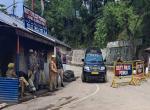
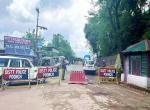
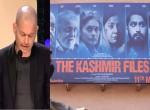

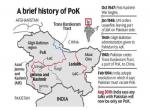
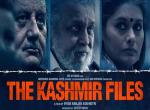

Post new comment